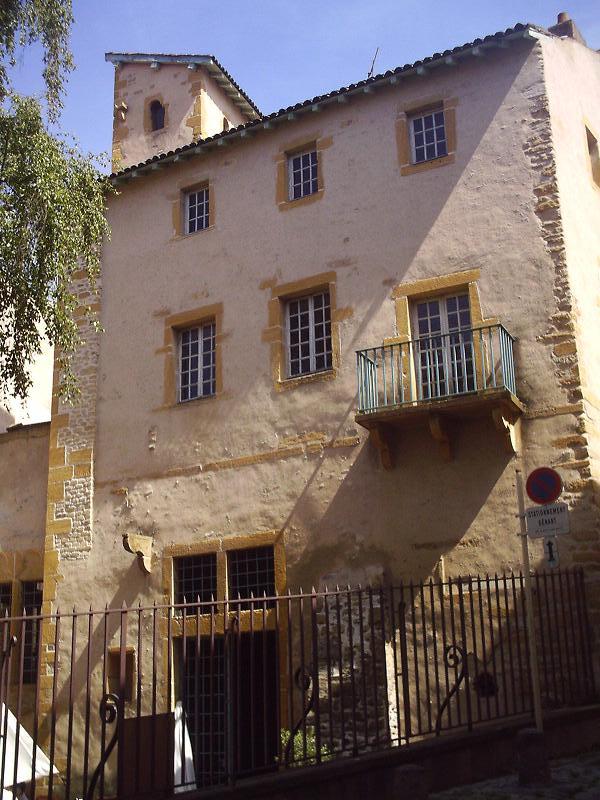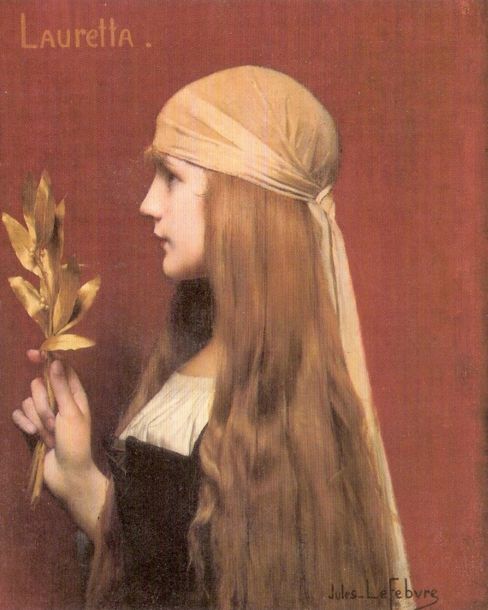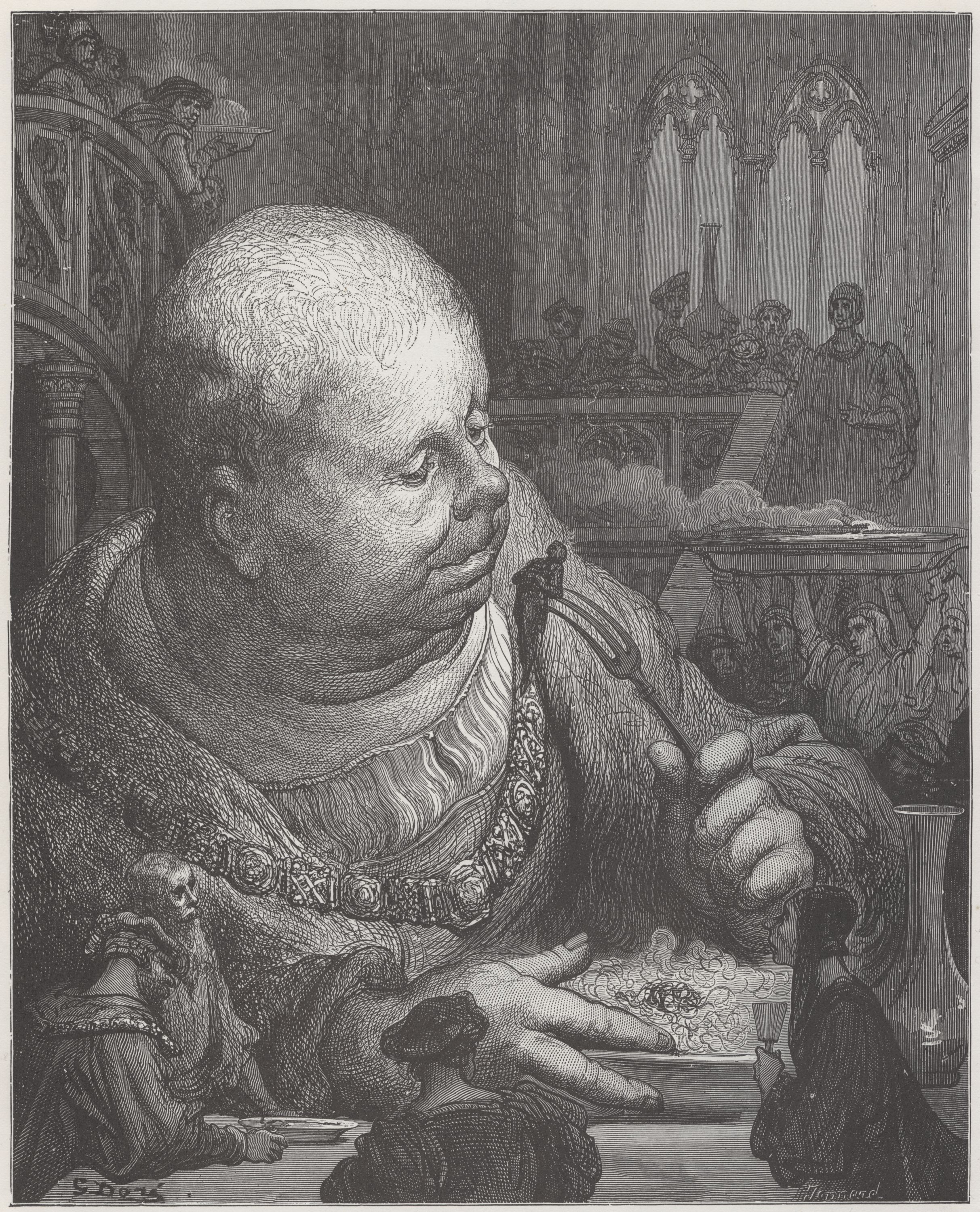|
Heptaméron
The ''Heptaméron'' is a collection of 72 short stories written in French by Marguerite de Navarre (1492–1549), published posthumously in 1558. It has the form of a frame narrative and was inspired by ''The Decameron'' of Giovanni Boccaccio. It was originally intended to contain one hundred stories covering ten days like ''The Decameron'', but at Marguerite’s death it was completed only as far as the second story of the eighth day. Many of the stories deal with love, lust, infidelity, and other romantic and sexual matters. One was based on the life of Marguerite de La Rocque, a French noblewoman who was punished by being abandoned with her lover on an island off Quebec. In 1973, the French director Claude Pierson (1930-1997) made an adaptation of this work, entitled '' Ah ! Si mon moine voulait…'' with Alice Arno in the cast. The collection first appeared in print in 1558 under the title ''Histoires des amans fortunez'' edited by Pierre Boaistuau, who took considerable ... [...More Info...] [...Related Items...] OR: [Wikipedia] [Google] [Baidu] |
Marguerite De La Rocque
Marguerite de La Rocque de Roberval ('' fl'' 1515–1542) was a French noblewoman who spent some years marooned on the Île des Démons while on her way to New France (Quebec). She became well known after her subsequent rescue and return to France; her story was recounted in the ''Heptaméron'' by Queen Marguerite of Navarre, and in later histories by François de Belleforest and André Thévet. Her story has been retold many times since 1560. Early life Marguerite de La Rocque's place and date of birth are unknown, but records attest to her declaration of fealty and homage in 1536 for her lands in Périgord and Languedoc. She was co- seigneuress of Pontpoint, with relative Jean-François de La Rocque de Roberval, a nobleman privateer favoured by Francis I of France. (The exact relationship remains unclear. André Thevet claimed Roberval was her uncle, while François de Belleforest indicated they were brother and sister.Leslie & Seagrave, p. 544 Historian Elizabeth Boyer su ... [...More Info...] [...Related Items...] OR: [Wikipedia] [Google] [Baidu] |
Pierre Boaistuau
Pierre Boaistuau, also known as Pierre Launay or Sieur de Launay (c. 1517, Nantes – 1566, Paris), was a French Renaissance humanist writer, author of a number of popularizing compilations and discourses on various subjects. Beside his many popular titles as a writer, Boaistuau was also an editor, translator and compiler. He holds a very special place in literary developments in the middle and second half of the sixteenth century as the importer of two influential genres in France, the 'histoire tragique' and the 'histoire prodigieuse'. He was also the first editor of Marguerite of Navarre's collection of nouvelles that is known today as ''Heptameron''. Life Boaistuau was born in Nantes and later studied civil and canon law in the universities of Poitiers, Valence (where he was a student of the eminent jurist Jean de Coras), and Avignon (where he studied under the guidance of Emilio Ferretti). During his student years, he worked as the secretary of the French ambassador to the Ea ... [...More Info...] [...Related Items...] OR: [Wikipedia] [Google] [Baidu] |
François Rabelais
François Rabelais ( , , ; born between 1483 and 1494; died 1553) was a French Renaissance writer, physician, Renaissance humanist, monk and Greek scholar. He is primarily known as a writer of satire, of the grotesque, and of bawdy jokes and songs. Ecclesiastical yet anticlerical, Christian yet considered by some as a free thinker, a doctor yet having the image of a '' bon vivant'', the multiple facets of his personality sometimes seem contradictory. Caught up in the religious and political turmoil of the Reformation, Rabelais showed himself to be both sensitive and critical towards the great questions of his time. Subsequently, the views of his life and work have evolved according to the times and currents of thought. An admirer of Erasmus, through parody and satire Rabelais fought for tolerance, peace, an evangelical faith, and a return to the knowledge of ancient Greco-Romans to dispel the "Gothic darkness" that characterized the Middle Ages. He took up the theses of P ... [...More Info...] [...Related Items...] OR: [Wikipedia] [Google] [Baidu] |
The Decameron
''The Decameron'' (; it, label=Italian, Decameron or ''Decamerone'' ), subtitled ''Prince Galehaut'' (Old it, Prencipe Galeotto, links=no ) and sometimes nicknamed ''l'Umana commedia'' ("the Human comedy", as it was Boccaccio that dubbed Dante Alighieri's ''Comedy'' "''Divine''"), is a collection of short stories by the 14th-century Italian author Giovanni Boccaccio (1313–1375). The book is structured as a frame story containing 100 tales told by a group of seven young women and three young men; they shelter in a secluded villa just outside Florence in order to escape the Black Death, which was afflicting the city. Boccaccio probably conceived of the ''Decameron'' after the epidemic of 1348, and completed it by 1353. The various tales of love in ''The Decameron'' range from the erotic to the tragic. Tales of wit, practical jokes, and life lessons contribute to the mosaic. In addition to its literary value and widespread influence (for example on Chaucer's ''Canterbury Ta ... [...More Info...] [...Related Items...] OR: [Wikipedia] [Google] [Baidu] |
Jean Clouet (Attributed) - Portrait Of Marguerite Of Navarre - Google Art Project
Jean (or Janet) Clouet (1480–1541) was a miniaturist and painter who worked in France during the High Renaissance. He was the father of François Clouet. Biography The authentic presence of this artist at the French court is first mentioned in 1516, the second year of the reign of Francis I. By a deed of gift made by the king to the artist's son of his father's estate, which had escheated to the crown, we learn that he was not actually a Frenchman, and never naturalized. He is supposed to have been a native of the Low Countries, and probably his real name was Cloet. He lived several years in Tours, and there it was he met his wife, who was the daughter of a jeweller. He is recorded as living in Tours in 1522, and there is a reference to his wife's residence in the same town in 1523. In that year Clouet was awarded the position of Groom of the Chamber by the King, with a stipend at first of 180 livres and later of 240. He and his wife were certainly living in Paris in 1529, ... [...More Info...] [...Related Items...] OR: [Wikipedia] [Google] [Baidu] |
Italy
Italy ( it, Italia ), officially the Italian Republic, ) or the Republic of Italy, is a country in Southern Europe. It is located in the middle of the Mediterranean Sea, and its territory largely coincides with the homonymous geographical region. Italy is also considered part of Western Europe, and shares land borders with France, Switzerland, Austria, Slovenia and the enclaved microstates of Vatican City and San Marino. It has a territorial exclave in Switzerland, Campione. Italy covers an area of , with a population of over 60 million. It is the third-most populous member state of the European Union, the sixth-most populous country in Europe, and the tenth-largest country in the continent by land area. Italy's capital and largest city is Rome. Italy was the native place of many civilizations such as the Italic peoples and the Etruscans, while due to its central geographic location in Southern Europe and the Mediterranean, the country has also historically been home ... [...More Info...] [...Related Items...] OR: [Wikipedia] [Google] [Baidu] |
Scriptures
Religious texts, including scripture, are texts which various religions consider to be of central importance to their religious tradition. They differ from literature by being a compilation or discussion of beliefs, mythologies, ritual practices, commandments or laws, ethical conduct, spiritual aspirations, and for creating or fostering a religious community. The relative authority of religious texts develops over time and is derived from the ratification, enforcement, and its use across generations. Some religious texts are accepted or categorized as canonical, some non-canonical, and others extracanonical, semi-canonical, deutero-canonical, pre-canonical or post-canonical. "Scripture" (or "scriptures") is a subset of religious texts considered to be "especially authoritative", revered and "holy writ", "sacred, canonical", or of "supreme authority, special status" to a religious community. The terms ''sacred text'' and ''religious text'' are not necessarily interchangeable ... [...More Info...] [...Related Items...] OR: [Wikipedia] [Google] [Baidu] |
Gargantua And Pantagruel
''The Life of Gargantua and of Pantagruel'' (french: La vie de Gargantua et de Pantagruel) is a pentalogy of novels written in the 16th century by François Rabelais, telling the adventures of two giants, Gargantua ( , ) and his son Pantagruel ( , ). The work is written in an amusing, extravagant, and satirical vein, features much erudition, vulgarity, and wordplay, and is regularly compared with the works of William Shakespeare and James Joyce. Rabelais was a polyglot, and the work introduced "a great number of new and difficult words ..into the French language". The work was stigmatised as obscene by the censors of the Collège de la Sorbonne, and, within a social climate of increasing religious oppression in a lead up to the French Wars of Religion, it was treated with suspicion, and contemporaries avoided mentioning it.Le Cadet, Nicolas (2009) Marcel De Grève, La réception de Rabelais en Europe du XVIe au XVIIIe siècle', Cahiers de recherches médiévales et humanistes ... [...More Info...] [...Related Items...] OR: [Wikipedia] [Google] [Baidu] |
Naples
Naples (; it, Napoli ; nap, Napule ), from grc, Νεάπολις, Neápolis, lit=new city. is the regional capital of Campania and the third-largest city of Italy, after Rome and Milan, with a population of 909,048 within the city's administrative limits as of 2022. Its province-level municipality is the third-most populous metropolitan city in Italy with a population of 3,115,320 residents, and its metropolitan area stretches beyond the boundaries of the city wall for approximately 20 miles. Founded by Greeks in the first millennium BC, Naples is one of the oldest continuously inhabited urban areas in the world. In the eighth century BC, a colony known as Parthenope ( grc, Παρθενόπη) was established on the Pizzofalcone hill. In the sixth century BC, it was refounded as Neápolis. The city was an important part of Magna Graecia, played a major role in the merging of Greek and Roman society, and was a significant cultural centre under the Romans. Naples served a ... [...More Info...] [...Related Items...] OR: [Wikipedia] [Google] [Baidu] |
Irony
Irony (), in its broadest sense, is the juxtaposition of what on the surface appears to be the case and what is actually the case or to be expected; it is an important rhetorical device and literary technique. Irony can be categorized into different types, including ''verbal irony'', ''dramatic irony'', and ''situational irony''. Verbal, dramatic, and situational irony are often used for emphasis in the assertion of a truth. The ironic form of simile, used in sarcasm, and some forms of litotes can emphasize one's meaning by the deliberate use of language which states the opposite of the truth, denies the contrary of the truth, or drastically and obviously understates a factual connection. Definitions Henry Watson Fowler, in ''The King's English'', says, "any definition of irony—though hundreds might be given, and very few of them would be accepted—must include this, that the surface meaning and the underlying meaning of what is said are not the same." Also, Eric Partrid ... [...More Info...] [...Related Items...] OR: [Wikipedia] [Google] [Baidu] |
Cuckold
A cuckold is the husband of an adulterous wife; the wife of an adulterous husband is a cuckquean. In biology, a cuckold is a male who unwittingly invests parental effort in juveniles who are not genetically his offspring. A husband who is aware of and tolerates his wife's infidelity is sometimes called a wittol or wittold. History of the term The word ''cuckold'' derives from the cuckoo bird, alluding to its habit of laying its eggs in other birds' nests. The association is common in medieval folklore, literature, and iconography. English usage first appears about 1250 in the medieval debate poem ''The Owl and the Nightingale''. It was characterized as an overtly blunt term in John Lydgate's "Fall of Princes", . Shakespeare's writing often referred to cuckolds, with several of his characters suspecting they had become one. The word often implies that the husband is deceived; that he is unaware of his wife's unfaithfulness and may not know until the arrival or growth o ... [...More Info...] [...Related Items...] OR: [Wikipedia] [Google] [Baidu] |
Bible
The Bible (from Koine Greek , , 'the books') is a collection of religious texts or scriptures that are held to be sacred in Christianity, Judaism, Samaritanism, and many other religions. The Bible is an anthologya compilation of texts of a variety of forms originally written in Hebrew, Aramaic, and Koine Greek. These texts include instructions, stories, poetry, and prophecies, among other genres. The collection of materials that are accepted as part of the Bible by a particular religious tradition or community is called a biblical canon. Believers in the Bible generally consider it to be a product of divine inspiration, but the way they understand what that means and interpret the text can vary. The religious texts were compiled by different religious communities into various official collections. The earliest contained the first five books of the Bible. It is called the Torah in Hebrew and the Pentateuch (meaning ''five books'') in Greek; the second oldest part was a coll ... [...More Info...] [...Related Items...] OR: [Wikipedia] [Google] [Baidu] |









.jpg)